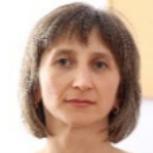
Iryna Yurchuk
Work place: Department of Software Systems and Technologies, Taras Shevchenko National University of Kyiv, Kyiv, 01601, Ukraine
E-mail: i.a.yurchuk@gmail.com
Website:
Research Interests:
Biography
Iryna Yurchuk holds a PhD in Physical and Mathematical Sciences and is an Associate Professor in the Department of Software Systems and Technologies at Taras Shevchenko National University of Kyiv. She earned a Master's degree in Mathematics from Lesya Ukrainka Volyn National University. From 2007 to 2019, she served at the National Aviation University as Assistant, Senior Lecturer, and Associate Professor. Her research specialization encompasses topology of low-dimensional manifolds, topological data analysis, and machine learning algorithms.
Author Articles
Geospatial Detection and Movement Analysis System for Unmanned Aerial Vehicles Based on Computer Vision Methods
By Iryna Yurchuk Danyil-Mykola Obertan
DOI: https://doi.org/10.5815/ijitcs.2025.04.02, Pub. Date: 8 Aug. 2025
The rapid proliferation of Unmanned Aerial Vehicles (UAVs) across military, commercial, and civilian domains creates unprecedented security challenges while simultaneously offering significant operational advantages. Current detection and tracking systems face mounting pressure to balance effectiveness with deployment complexity and cost constraints. This paper presents a geospatial detection and movement analysis system for Unmanned Aerial Vehicles that addresses critical security challenges through innovative mathematical and software solutions. The research introduces a methodology for UAV monitoring that minimizes sensor requirements, utilizing a single optical sensor equipped with distance measurement capabilities. The core of this work focuses on developing and evaluating an algorithm for three-dimensional (3D) coordinate determination and trajectory prediction without requiring direct altitude measurement. The proposed approach integrates computer vision detection results with a mathematical model that defines spatial relationships between camera parameters and detected objects. Specifically, the algorithm estimates altitude parameters and calculates probable flight trajectories by analyzing the correlation between apparent size variation and measured distance changes across continuous detections. The system implements a complete analytical pipeline, including continuous detection processing, geospatial coordinate transformation, trajectory vector calculation, and visualization on geographic interfaces. Its modular architecture supports real-time analysis of video streams, representing detected trajectories as vector projections with associated uncertainty metrics. The algorithm's capability to provide reliable trajectory predictions is demonstrated through validation in synthetically generated environments. It offers a cost-effective monitoring solution for small aerial objects across diverse environmental conditions. This research contributes to the development of minimally-instrumented UAV tracking systems applicable in both civilian and defense scenarios.
[...] Read more.Other Articles
Subscribe to receive issue release notifications and newsletters from MECS Press journals